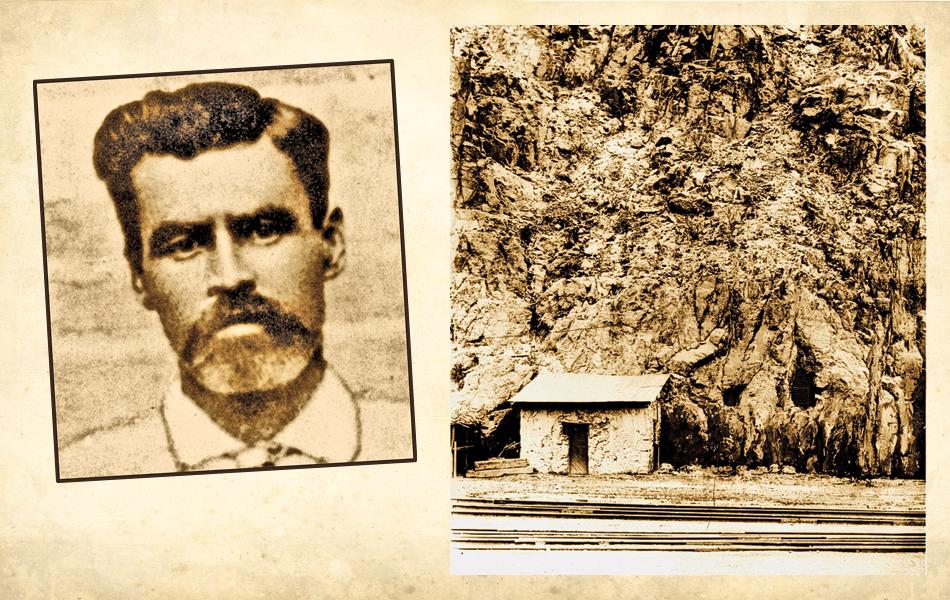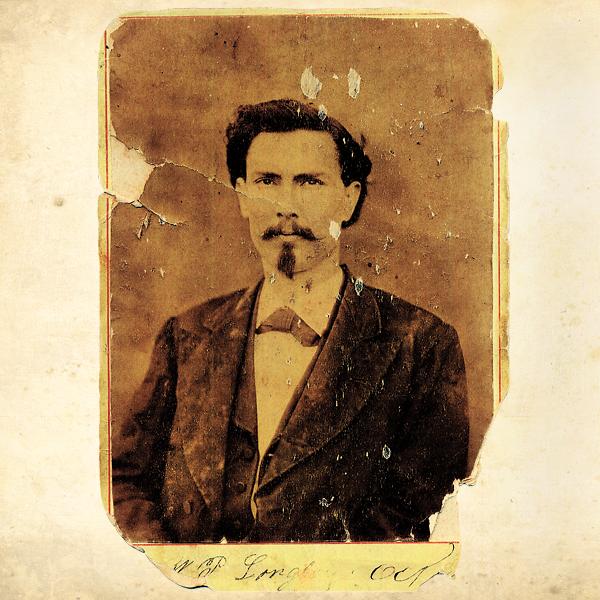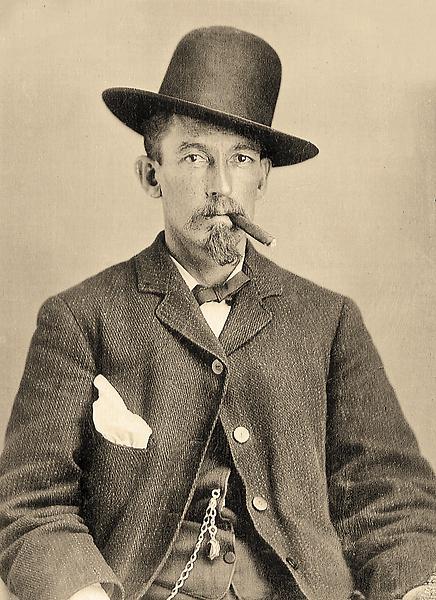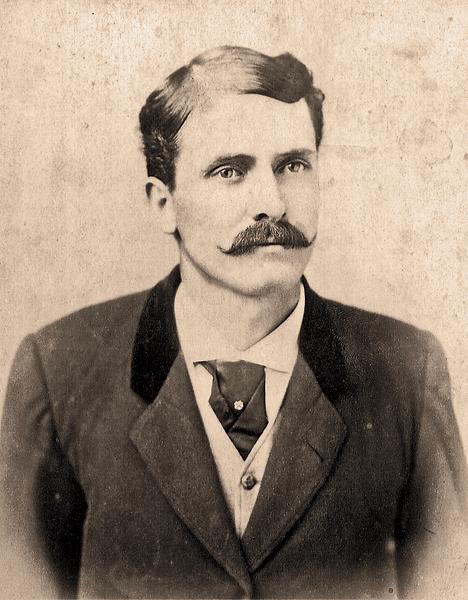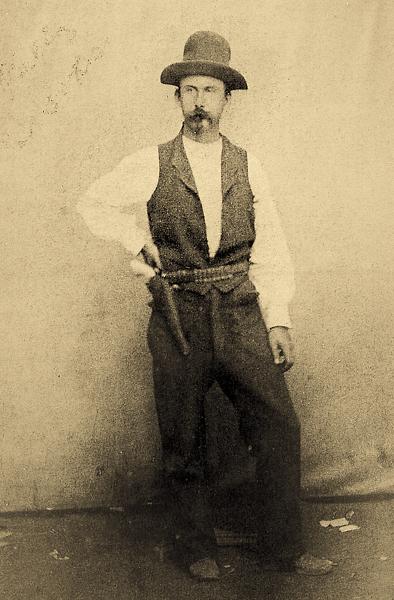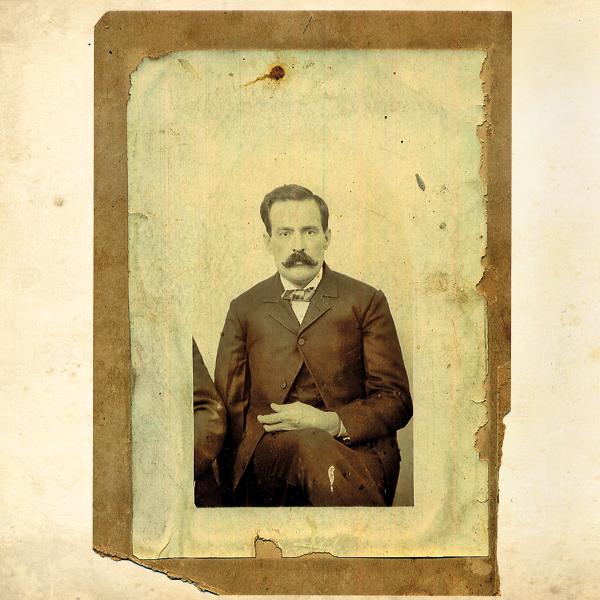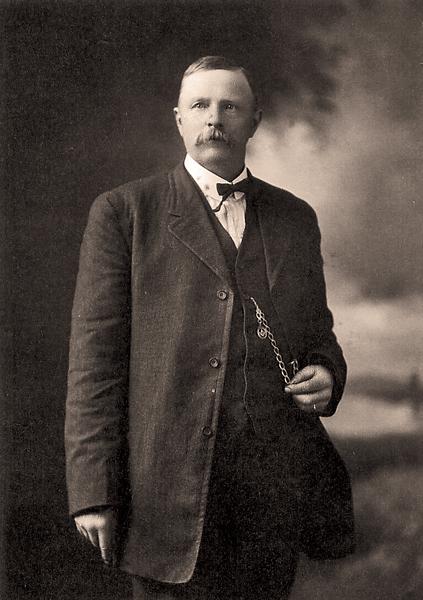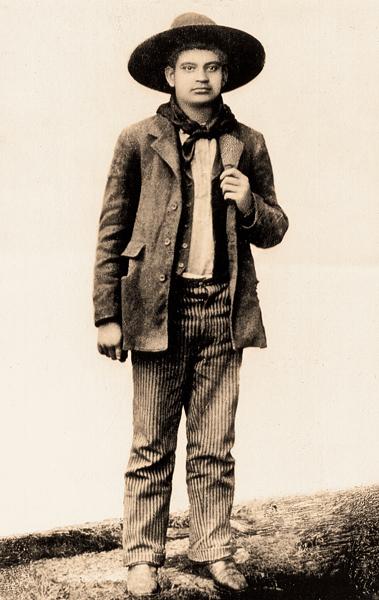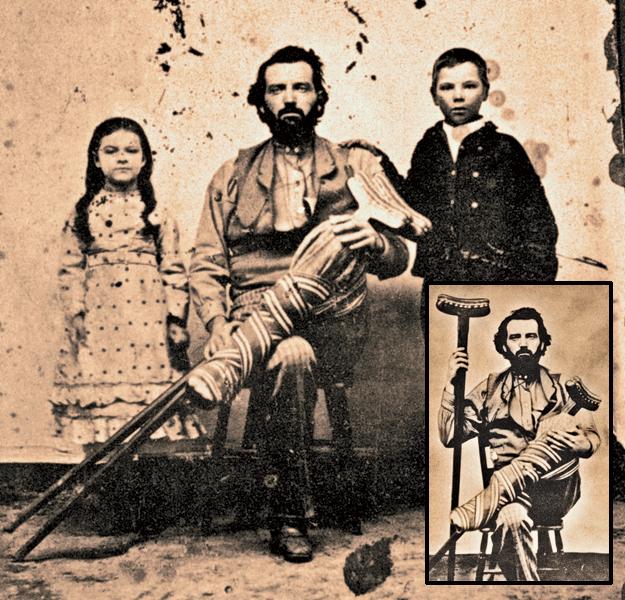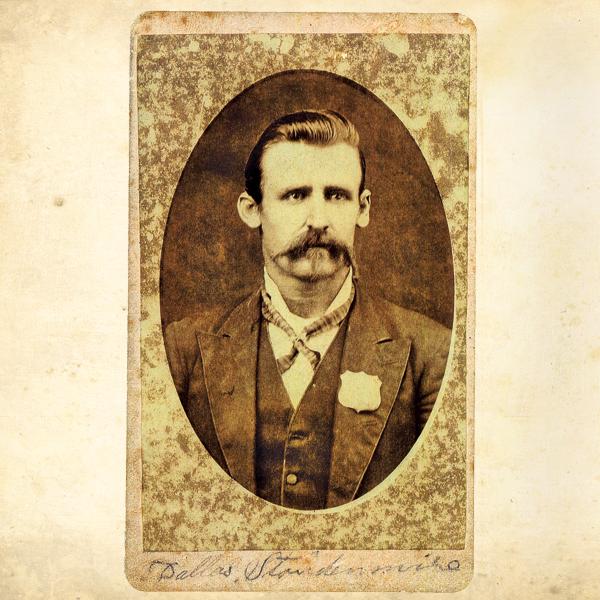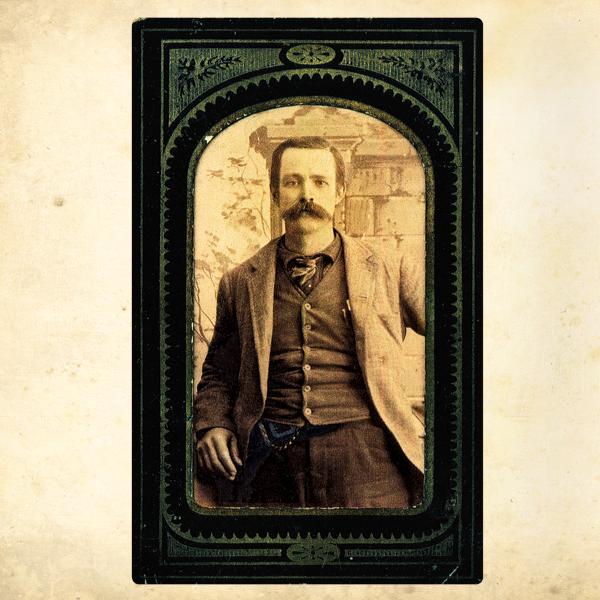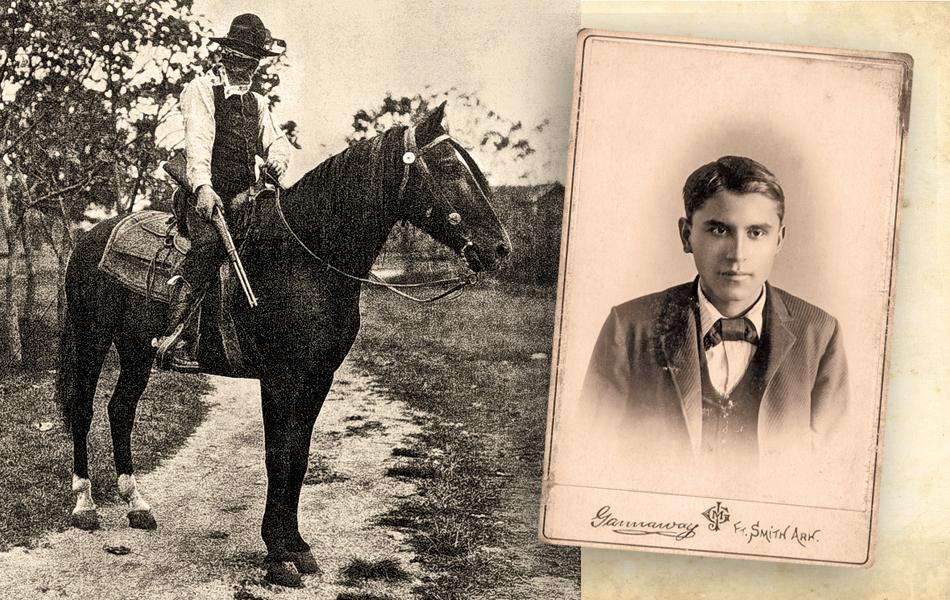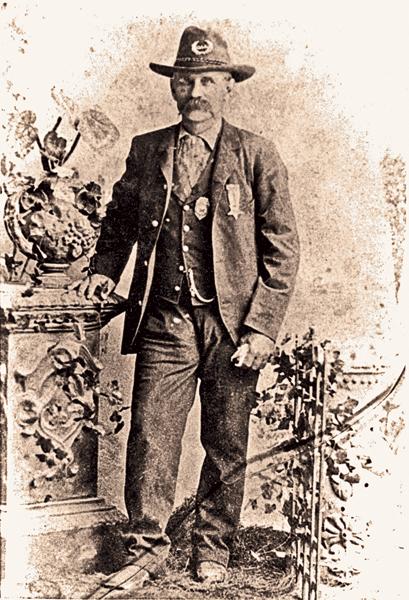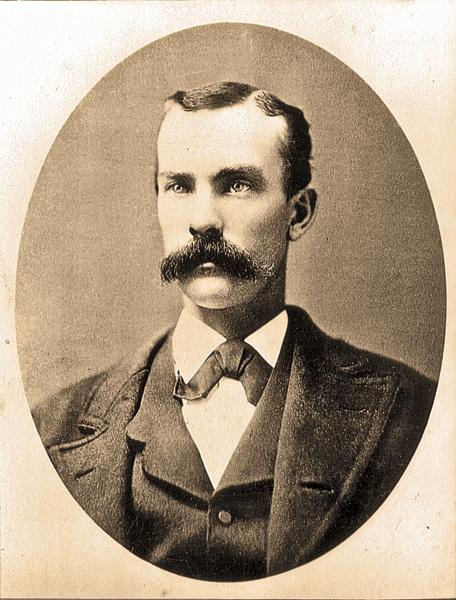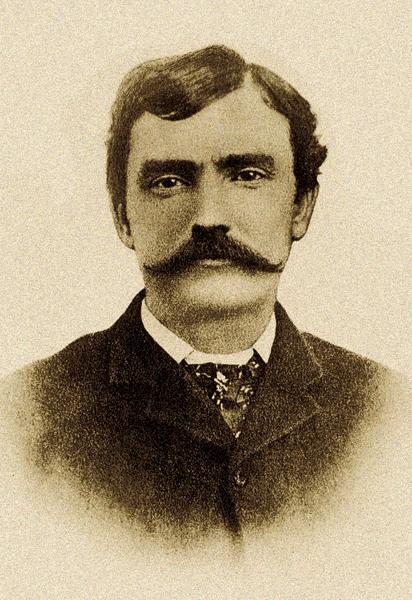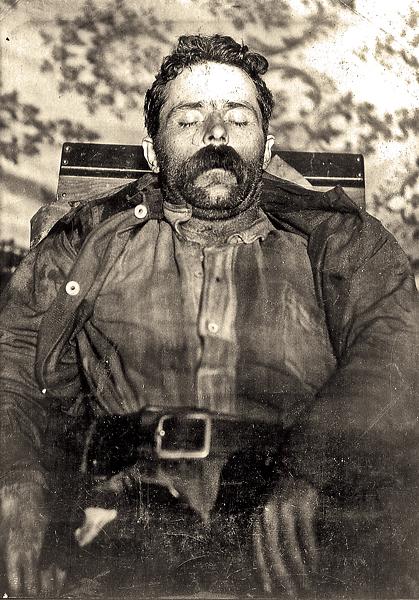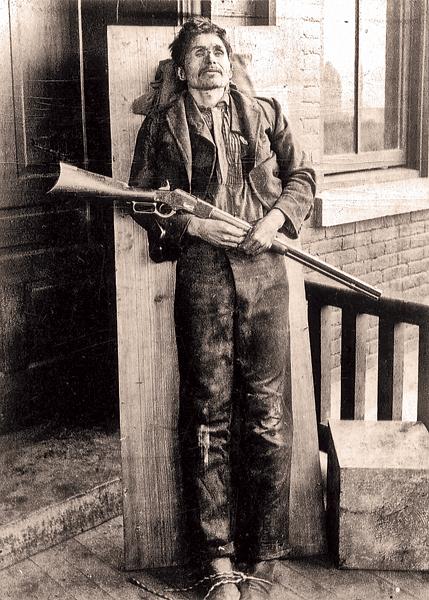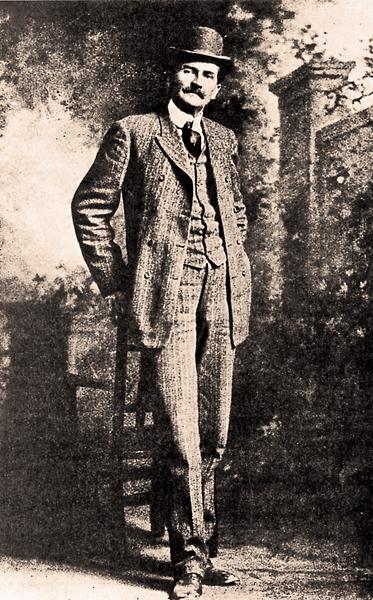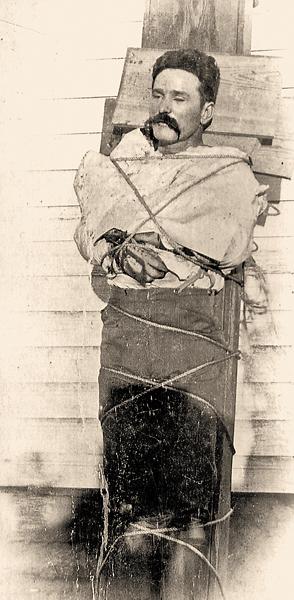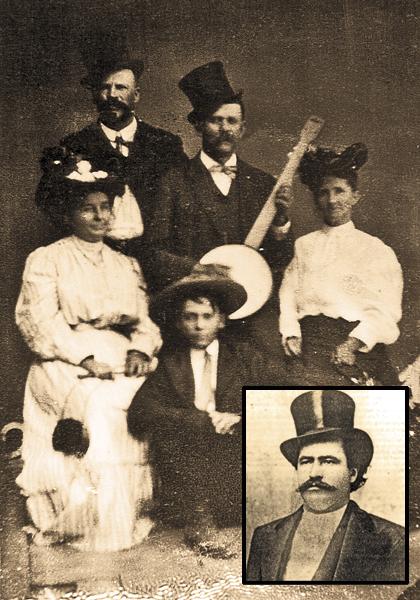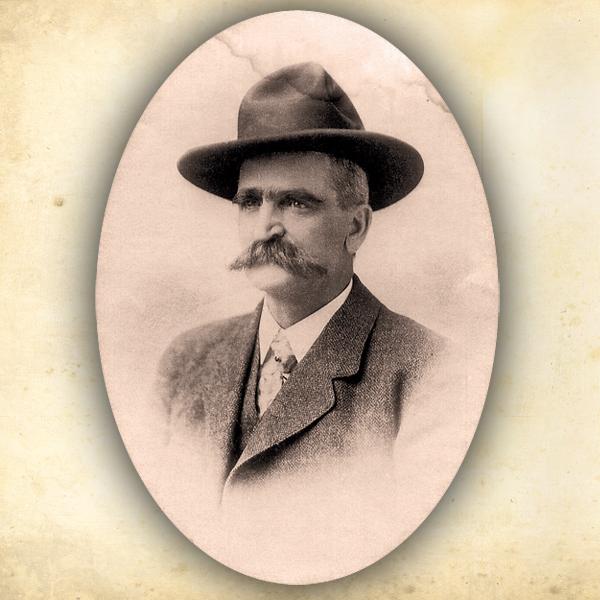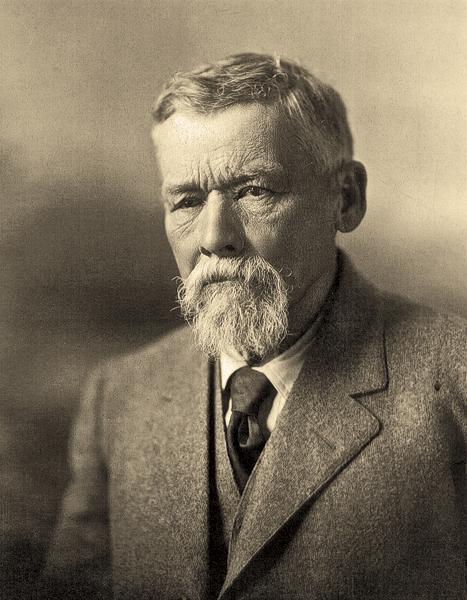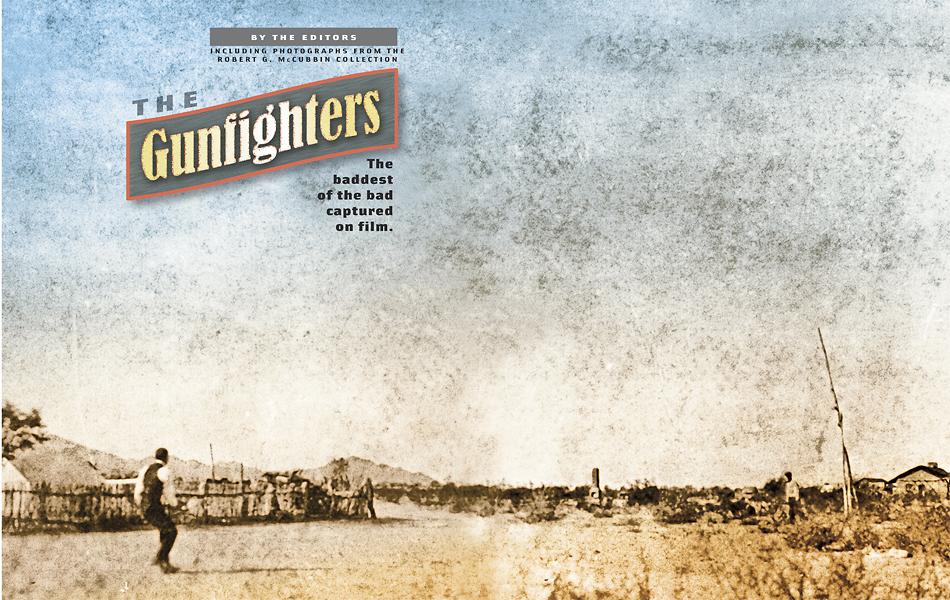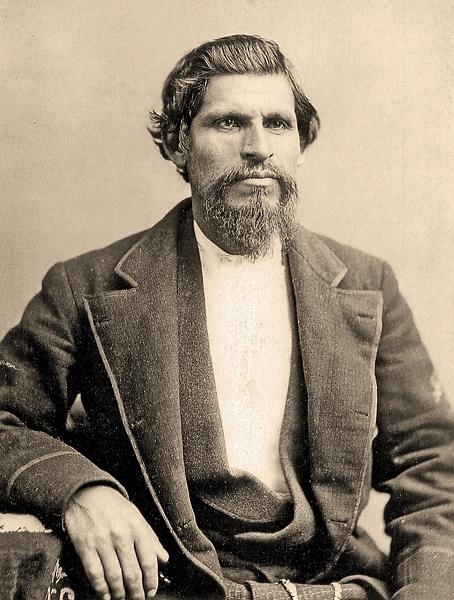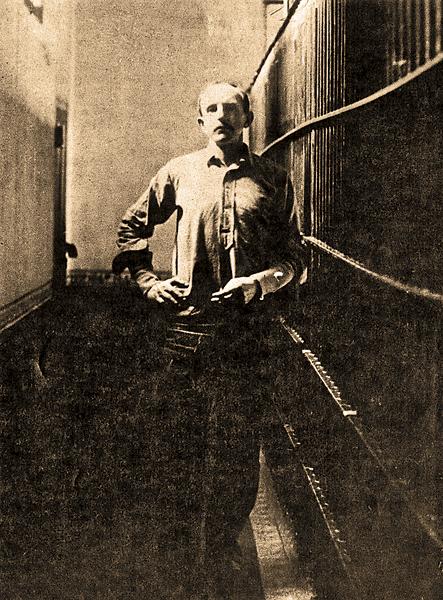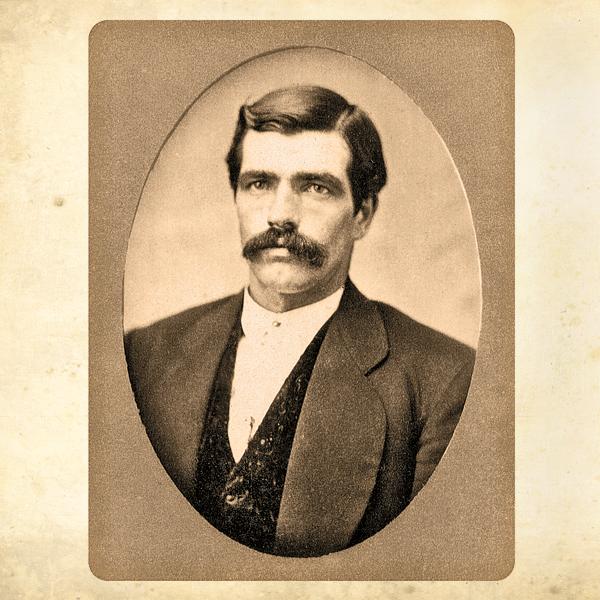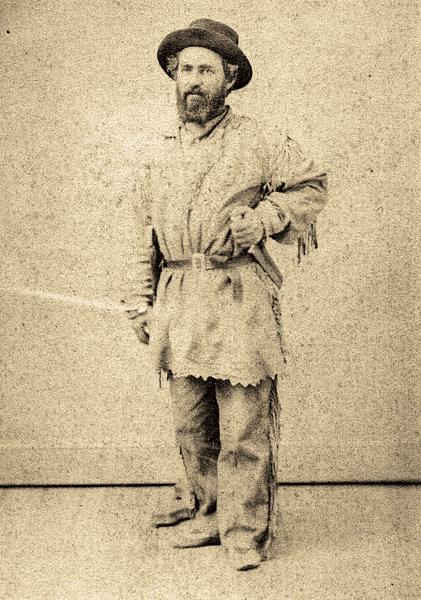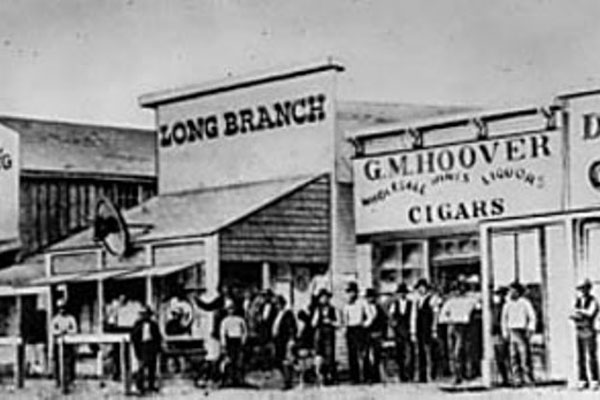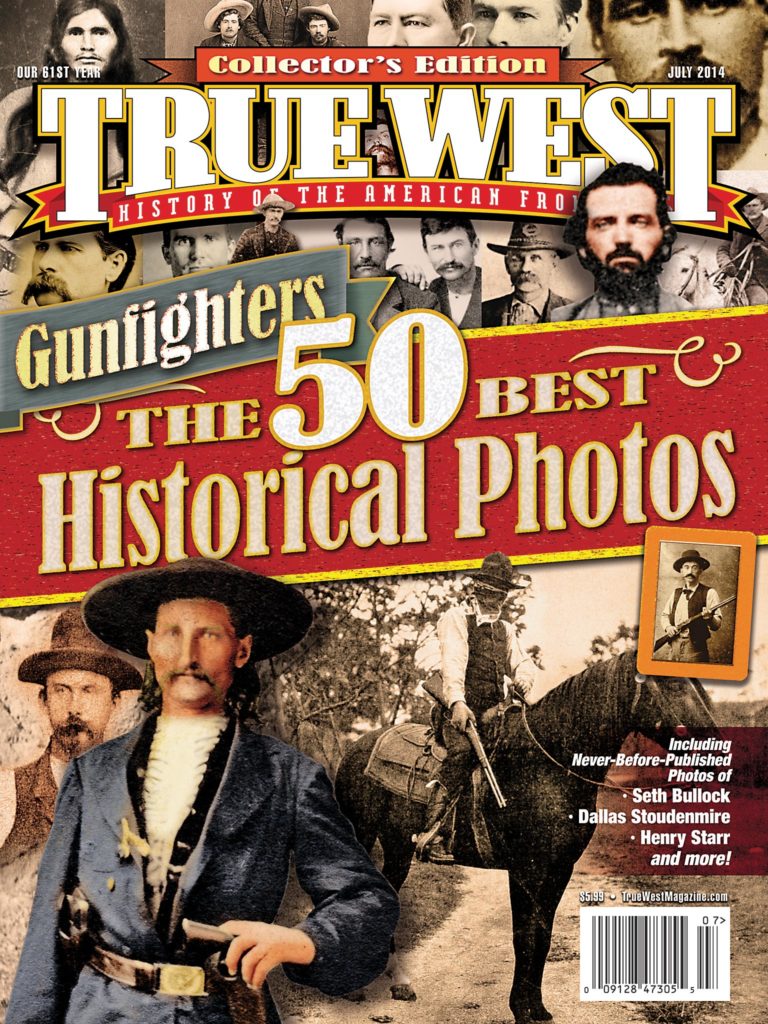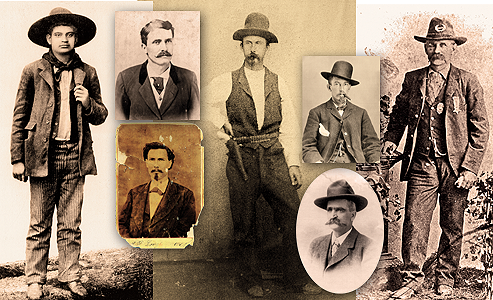 Some of these badmen were so tough the only way to get a photograph of them was in death.
Some of these badmen were so tough the only way to get a photograph of them was in death.
Other gunfighters posed for many a picture (Wild Bill Hickok is one example). As time went on—and camera shutter speeds improved—a photograph emerged that showed a gunfight in progress (shown on this spread). What follows are some of the best photos of Western gunfighters, many scanned from the originals so you can see the fine details. In fact, five of these incredible images have never before been published—to the best of our knowledge. Enjoy!
Photo Gallery
A Mexican outlaw and folk hero in Arizona Territory, Augustine Chacon, was most known for a gunfight that took place after he and his gang robbed a store in Morenci, Arizona, in 1895. Chacon’s buddies were killed, but the posse captured him and took him to the jail in Clifton (at right). During the shoot-out, Chacon had killed posse member Pablo Salcido. Chacon was sentenced to hang for that murder in 1896, but he escaped jail the next year. In 1902, Arizona Ranger Capt. Burt Mossman set a trap by convincing outlaw Burt Alvord to help him capture Chacon.
– Courtesy True West Archives –
A quick-tempered murderer, Bill Longley got his start killing a former slave in Texas in 1868. His kills included his boyhood friend Wilson Anderson and a hunting buddy George Thomas, both in 1875, and fellow outlaw Lou Shroyer and Longley’s landlord, both in 1876. The dangerous gunfighter paid the ultimate price at the end of a noose in 1878.
After his third prison term, Ezra Allen Miner, better known as Bill, moved to Canada and staged one of British Columbia’s first train robberies, in 1904. During another train robbery, in 1906, he got in a brief gunfight with the Royal Northwest Mounted Police. He and his crew were arrested. Miner’s story inspired 1983’s The Grey Fox, starring Richard Farnsworth as the outlaw.
Bill Tilghman is shown here in Dodge City, Kansas, where he briefly returned during the bloodless 1883 Dodge City War. While working as a deputy U.S. marshal in the former Indian Territory, Tilghman became famous for his single-handed capture of Bill Doolin in 1895. He died in the line of duty, at the age of 70, in 1924.
Billy Brooks reportedly shot it out with several men in various gunfights while working as a marshal in Newton, Kansas, and causing trouble as a badman in Dodge City. But when he returned to his old position as a stage driver for Southwestern Stage in 1874, the company lost a mail contract and Brooks was out of a job. He and others came up with a plan to steal the rival company’s horses and mules to get back the contract. After Brooks was caught and arrested, an angry mob got a hold of Brooks and two of his accomplices and hanged them.
– All photos Courtesy Robert G. McCubbin collection unless otherwise noted –
Tom “Black Jack” Ketchum, shown here after he was captured and his right arm amputated, and shortly before he was hanged in 1901 for attempted train robbery, had emptied his rifle into the bodies of two posse members chasing him and his brother for robbing a store in Liberty, New Mexico, in 1896, before continuing on his life of crime as a train robber. The citizens of New Mexico Territory were so mad at the daring of train robbers that they made Ketchum pay with his life, marking him as the only person who suffered capital punishment for “felonious assault upon a railway train,” a law later deemed unconstitutional.
Bud Ledbetter, shown in this never-before-published photograph, gained a reputation for his gunfighting skills, especially after the deputy U.S. marshal assisted in bringing in four members of the train robbing Al Jennings Gang in 1897.
Crawford Goldsby, an outlaw better known as Cherokee Bill and one of the most dangerous men terrorizing Indian Territory, shot anyone who got in his way. He even killed his own brother-in-law, Mose Brown, over an argument about hogs. Interestingly, another gunfighter and prisoner at the time, Henry Starr, unarmed Goldsby when he shot a guard while attempting to break out of jail in 1895. He hanged for the murder of Ernest Melton the next year.
During his cowhand days, Clay Allison accidentally shot himself in the foot while stampeding Army mules as a prank in 1871. The children who surround him in the below picture have no idea Allison will soon become a notorious gunfighter in New Mexico. A heavy drinker, Allison went on shooting sprees that possibly included his involvement in a mob that lynched Cruz Vega in 1875. Two days later, he killed Vega’s friend at the St. James Hotel in Cimarron. Allison died violently, but not at the end of a gun—in 1887, while hauling supplies to his ranch, he was thrown from his wagon and run over by its rear wheel.
– True West archives –
Dallas Stoudenmire, shown here as marshal in El Paso, Texas, in this never-before-published photograph. He was an imposing force, standing six feet, four inches. An April 14, 1881, gun battle—styled as “Four Dead in Five Seconds”—entered him into a feud with the Manning brothers. He resigned as city marshal in 1882 and became a deputy U.S. marshal in July, only to be killed by James and Doc Manning on September 18.
Buckskin Frank Leslie shot it out with Billy Claiborne, one of the survivors of the Gunfight Behind the O.K. Corral. Just one year later, in 1882, Claiborne got in an argument with Leslie who mortally wounded Claiborne in a gunfight outside the Oriental Saloon. We don’t know how Leslie met his end; he disappeared from public records in 1922. Old West photograph collector Robert G. McCubbin thinks the man in this photo looks like Leslie, but he does not have good provenance to verify it is him.
Chacon’s hanging on November 14 was a big occasion; a 14-foot adobe wall was built around the scaffold so that only those with invitations could view the execution. While walking up the steps of the scaffold (shown here), he shook the hands of admirers who would soon watch him drop to his death.
– Courtesy True West Archives –
In the film A Debtor to the Law, real-life robber Henry Starr played himself in a re-creation of the bank robberies in Stroud, Oklahoma. That shoot-out with the town’s citizens had left Starr wounded and captured while the rest of the gang escaped with the loot. Starr is shown in a never-before-published photograph at left and below in badman gear in the film.
April 5 was an eventful date in the gunfighting career of John Selman, the man most known for shooting down deadly killer John Wesley Hardin in 1895. On that day in 1894, Selman killed a former Texas Ranger named Bass Outlaw. On April 5, 1896, Selman got into a dispute with Deputy U.S. Marshal George Scarborough in El Paso, Texas, went into an alley to shoot it out…and lost. The lawman was 56 when he died.
– Courtesy Leon Metz Collection –
This photo, copied from an original owned by the family, was tipped in a book written by John Ringo’s mother, The Journal of Mrs. Mary Ringo, and owned by Mary’s grandson. It is much clearer and sharper than any other that has surfaced (as Texas historian Chuck Parsons puts it: “You can count the whiskers in his moustache”). Ringo is more famously known for challenging Wyatt Earp and his cronies to gun battles, but the authorities broke it up before Ringo could show his mettle. By July 1882, Ringo was dead, apparently by his own hand, although some believe he was murdered by his enemies.
This Texas gunslinger was a known troublemaker who also used his gun talents on the side of the law, as well, in 1883 when, as acting sheriff of Uvalde County, he killed a stagecoach robbery suspect. The next year, while hanging out with his gunfighter friend Ben Thompson, Fisher got caught in the crossfire between Thompson and those feuding with him over his killing of a popular theatre owner in San Antonio.
Richard “Little Dick” West robbed banks with Bill Doolin’s gang and bungled up train robberies with Al Jennings’s gang. Deputy U.S. Marshals Bill Tilghman and Heck Thomas tracked West to Guthrie, Oklahoma, and shot him dead in 1898.
Wanted for allegedly killing a U.S. marshal in 1887, Ned Christie resisted arrest for nearly five years. While he hid out in his fortified house in Cherokee Nation, in 1892, posse members attacked with cannon and dynamite. Christie ran toward the posse and was shot and killed. This photograph shows their “trophy” on a cellar door.
The lawman’s most famous kill did not come from a gun battle. In 1881, he sneaked into Pete Maxwell’s house and shot notorious outlaw Billy the Kid to death.
– True West archives –
George “Red Buck” Weightman also robbed banks with Bill Doolin’s gang. After numerous failed captures of Weightman, a posse finally got their man (shown dead) in a shoot-out on March 4, 1896.
Shown in this never-before-published photograph, Rowdy Joe Lowe appears at far left (and in inset below). He’s most known for his 1873 gunfight with saloon owner Red Beard in Delano, Kansas. Beard antagonized his next-door competitor, Lowe, by first firing at Lowe’s saloon and then attempting to kill him. Despite his wife attempting to dissuade him, Lowe ultimately got his man. He was found not guilty of killing Beard. He moved to Denver, Colorado, and started a family; he, too, was gunned down in a saloon, in 1899.
– Courtesy Jerry Adams Collection –
This never-before-published photograph of the first sheriff of Deadwood, Dakota Territory, originally came from Seth Bullock’s family. During his tenure as sheriff previously, in Montana’s Lewis and Clark County, he shot it out with horse thief Clell Watson. For Watson’s execution by hanging, Bullock held off a mob with a shotgun. In contrast to gunfighter Wild Bill Hickok, who was murdered the day after Bullock arrived in Deadwood, Bullock tended to leave his shooter holstered as the town’s professional lawman.
Born in 1841, John Horton Slaughter fearlessly fought in skirmishes against all kinds of enemies—Comanches, while working as a Texas Ranger; Union soldiers, as a trooper; and wicked outlaws, as sheriff of Cochise County in Arizona. He lived to the ripe age of 80.
In this 1904 gunfight photo taken in Quartzsite, Arizona, the shooter, in foreground, was chasing down an assailant at the corner of the fence, who looks to be holding a rifle. The assailant, according to the writing on the back of the photograph, had fired at the gent and was in the process of fleeing.
– Courtesy Roscoe Willson collection, Arizona historical foundation –
The California bandido escaped the law after numerous gun battles, but a posse finally caught up with him in 1874, at a former camel driver’s ranch house. He was hanged in 1875 for his role in the Tres Pinos raid two years earlier that resulted in the deaths of three bystanders.
Western lore records Tom Horn as a gunfighter, and he did wield a gun during Arizona’s Pleasant Valley War in 1887, but he was more accurately a hired gunman who usually shot his victims from ambush. He’s shown here, in the jail in Cheyenne, Wyoming, before his 1903 execution for the murder of 14-year-old Willie Nickell.– Courtesy True West Archives –
Tom Smith earned his “Bear River” nickname after he made a stand as a lawman during a shoot-out with Wyoming vigilantes. While working as a marshal in Abilene, Kansas, he tried to make the cowtown a no-gun zone, but a gunfight that erupted in 1870 while he served a warrant on two farmers cost him his life…and his head. Farmer Moses Miles hit Smith with his rifle and then took an axe and decapitated him.
Discovered in 1989, this photograph shows James “Wild Bill” Hickok with his cross-draw Navy Colts. The first man he reportedly killed was David McCanles at the Rock Creek Station in Nebraska in 1861. He also famously killed Dave Tutt in 1865 in a duel; instead of the face-to-face fast draw duel, the two men stood in a sideways dueling stance. Hickok biographer Joseph G. Rosa has written that this duel probably inspired the “showdown at noon” popularized in movies.
Voracious vigilante John X. Beidler used fear more than a gun to get his man. The pint-sized hangman—standing at five foot six—boasted he pursued and executed as many as 30 men of Henry Plummer’s road agent gang that terrorized Montana’s mining camps. This never-before-published photograph of Beidler originally came from Seth Bullock’s family.


